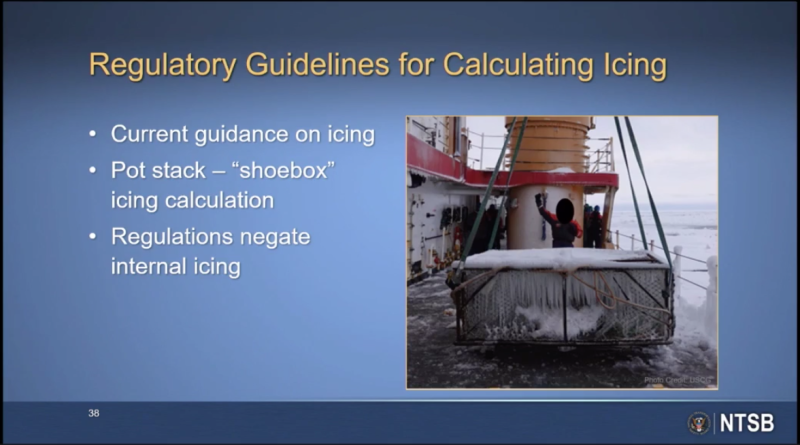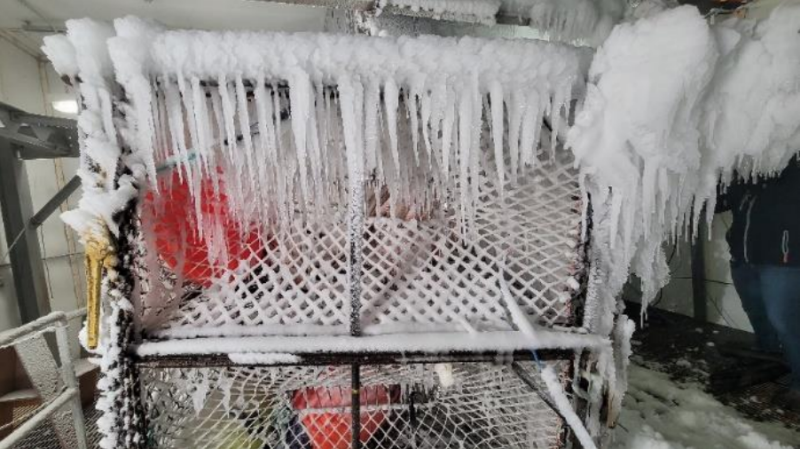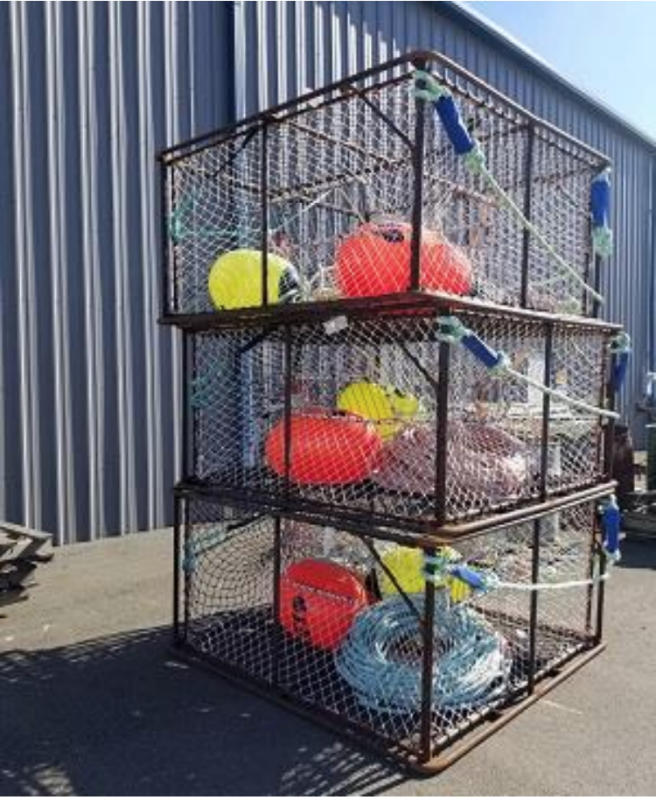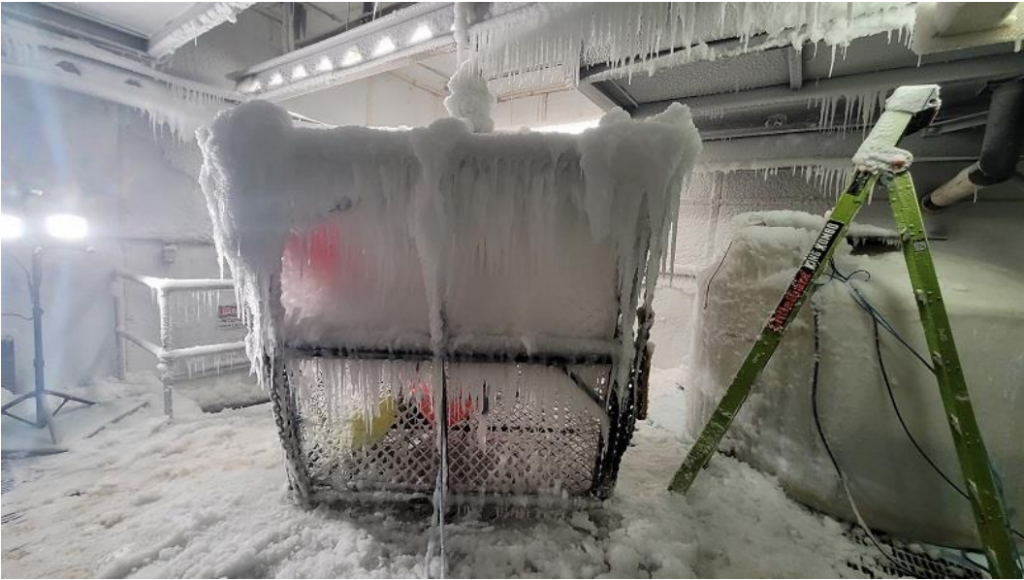Coast Guard studies crab gear ice accumulation after Bering Sea fleet sinkings
After the Bering Sea crabber Scandies Rose sank tragically on New Year’s Eve in 2019, a Coast Guard Marine Board of Investigation concluded that an unintentionally overstacked deck loaded with ice-laden pots was a contributing factor in the loss of the 130-foot boat that was operated by a veteran captain and experienced crew.
Scandies Rose: Coast Guard Conclusions
An investigation into the 2017 loss of the F/V Destination also revealed that icing directly contributed to the vessel’s loss of stability and rapid capsizing. Both vessels were known to be well maintained and run by experienced Bering Sea fishermen.
A panel of naval architects testified to the board convened for the Scandies Rose hearing that International Maritime Organization regulations do not account for ice inside of pots on a boat deck, only on the exterior surfaces of the stack.

After hearing testimony from a full slate of industry experts, the question remained: How heavy is a stack of pots coated with freezing sea spray?
In an attempt to answer this question, the board requested assistance from the Coast Guard Research and Development Center to study ice accretion and accumulation on fishing pots, specifically the crab and cod pots used in Alaska’s Bering Sea fishery.
The board sought “assistance in determining how ice accumulation occurs on the non-solid surface of the pot cage, the netting, and gear within the pot, as well as the added weight of ice accumulation over time,” according to the report published this week.

The Research and Development Center planned a full series of tests in a controlled environmental chamber at the U.S. Army’s Cold Regions Research and Engineering Lab in Hanover, N.H. The experiments showed that in certain situations, a single trap could accrete more than its own weight in ice, ice accretion thickness could be a rough indicator of weight gain, and covering a pot or stack of pots with a tarpaulin, or tarp, prevents ice accretion on the frame, mesh netting, warps and floats.
Constraints on the availability of crab pots on the market resulted in the researchers purchasing three 6- by 6- by 3-foot crab pots (rather than the 8-foot pots typical of the fishery) outfitted with warps and floats to be tested in a simulation of sea spray striking the three pots in various configurations.

The team tested ice accretion on these pots in an environmental chamber kept below 0 degrees F to track ice thickness and weight throughout the spraying duration. They tracked accretion weights for a single pot as well as two- and three-pot stacks, in two different facilities. An oscillating wand sprayed the pots at either a corner or a side, with spray arcing downward, measuring accretion thickness on the frame members for the duration of each test.
“In different trials,” the report reveals, “the weight of the ice accreted in the pots equaled or exceeded a pot’s original weight. In multiple-pot configurations, the top of the stack generally accreted significantly more ice than the lower pots. Though a primary goal of the project was to determine whether accreted ‘thickness’ could provide an indicator to an associated weight, test conditions, trap pot configurations, and ice consistency did not yield a consistent correlation. Pots covered by new, woven-polypropylene tarpaulins (tarps) and polyethylene sheeting showed significantly lower ice accretion than uncovered pots.”
Given the results from these tests, the report recommends that the Marine Board of Investigation “consider recommending to the Coast Guard Office of Design and Engineering Standards an examination of regulatory stability requirements pertaining to deck loading of frame and mesh fishing pots when a vessel can expect icing conditions.”







